Cherries in the garden, what you need to know about cherries, planting and caring for them
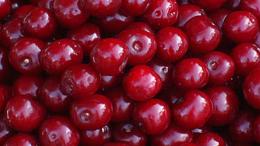
Cherry is a beautiful plant that evokes positive emotions in people with its appearance; it is not for nothing that poets and writers love to use the image of a blooming and fruiting cherry in their work. They love cherry and gardeners. It remains to figure out what kind of cherries there are, how finicky the cherry is, planting and caring for it.
Content:
- Common cherry, description
- What you need to know about cherries when choosing them for the garden
- Placing cherries in the garden
- Planting cherries and caring for them
Common cherry, description
In the botanical classification, cherry is a subgenus of Plum, from the Rosaceae family. According to its characteristics, the cherry subgenus differs from other close relatives of plum and apricot primarily in its flowers and fruits. All plants of the subgenus Cherry can be divided into two sections, Laurel cherry or bird cherry and Cherry itself, which includes bird cherry or sweet cherry and common or garden cherry, from which almost all cultivated varieties are obtained. In total, the subgenus has more than 60 species.
The common cherry was already known in cultivation eight thousand years BC. Presumably it is a product of natural hybridization. The parent forms were most likely cherry or bird cherry and steppe cherries and shrubby. This could happen where these plants existed nearby for thousands of years:
- on the Balkan Peninsula
- near the Dniester River
- in the Caucasus
The first mentions of cherries on the territory of modern Russia date back to the 10th century; already around the 15th century they have been quite widespread. Already in the 17th - 18th centuries, cherries moved far to the north and grew even on Valaam. Since that time, cherries have been one of the most beloved crops among the Russian population; they are respected by both gardeners and housewives. By appearance, all garden cherries can be divided into two groups:
- bushy cherries, no higher than three meters
- tree cherries, up to eight meters
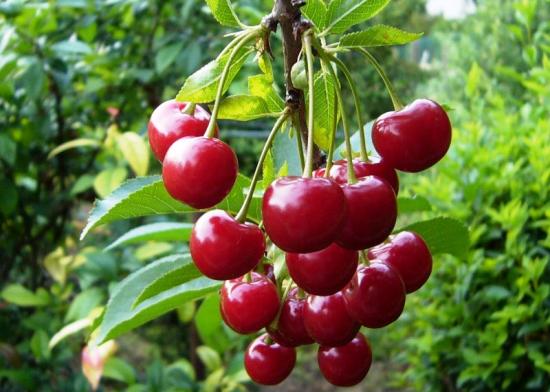
As a rule, bush cherries begin to bear fruit 3-4 years after planting, while tree cherries begin to bear fruit a year or two later. The leaves are petiolate, from 3 cm to 8 cm in length, green. The edge of the leaf plate is serrated. The flowers open at the same time as the leaves. All flowers have petioles on average about 4 cm in length. They are white, collected in small umbrellas.
The fruit is a true spherical drupe with pulp of sour or sweet-sour taste. The bone is rounded and has a side “seam”. The diameter of the fruit with pulp is about cm. Cherry wood is used to make furniture and decorative elements. Varieties Common cherries are common in industrial and amateur gardening.
What you need to know about cherries when choosing them for the garden
There are cherry trees in almost every garden. They grow well in any climate, except deserts and the far north. In garden conditions, bush cherries grow up to 15 - 18 years, and tree cherries - up to 30 years. All varietal cherries can be divided according to the taste and appearance of the fruit:
- moreli or griots
- Amoreli
The first group includes cherries with dark-colored fruits. The color of the fruit sometimes appears almost black. The juice of griots is also dark and tastes sour or sweet and sour.Amorelis have pink and light pink fruits, their juice is colorless and the taste is sweeter. The color of the leaves is light green.
In addition, cherry varieties can be self-fertile, partially self-fertile, or self-fertile. In the first two cases, you need to have at least two cherry trees of different varieties in the garden. When choosing a pollinator variety, it is important to focus on the time of flowering and fruiting; they must coincide with the main variety. For many common varieties, the pollinator is the Vladimirskaya cherry variety. Self-fertile varieties include:
- Bolotovskaya
- Youth
- Zhukovskaya
- Amorel
- Kentish
To partially self-fertile:
- Competitor
- Vladimirskaya
- Dessert Morozova
- Ryazanochka
- Nizhnekamsk
- Mtsenskaya
To the self-sterile:
- Lyusinovskaya
- Griot Moscow
- Lebedyanskaya
- Morozovka
- Livenecal
Separately, it is worth mentioning that cherries quite easily form hybrids with closely related plants, sweet cherries and bird cherry. The first were called duki, the second - cerapadus. Sometimes, where cherries grow poorly or are heavily affected by diseases, including coccomycosis, it makes sense to plant a hybrid variety of cherries.
Placing cherries in the garden
Cherries grow well in neutral soils. Even on slightly acidic soils, plants will grow poorly, and on acidic soils they may die completely. In the case when all the soils on the site are acidic, then lime must be added to the site selected for cherries at least six months in advance, and then everything should be dug up. On heavy acidic clay soils soils The rate of lime application is about 800 g per sq.m; on acidic sandy loam soils, 500 g per sq.m. will be sufficient. m.
In terms of mechanical composition, it is better to choose loamy and sandy loam soils. The plant is demanding of sunlight.It is best to place cherry trees on well-lit, gentle slopes facing south.
However, there is a threat of sunburn during the dormant period, when, at external negative temperatures under the bright sun, the tree bark heats up sharply. To protect against sunburn, from the end of February on the sunny side, you can install a board of the appropriate size.
Moisture and watering requirements
The close occurrence of groundwater and stagnant water are detrimental to cherry plantings. The plant is drought-resistant, but requires watering in the year of planting and in dry summers, cherries need to be watered during the period of ovary growth, three weeks before harvest and in the fall, when the leaves begin to fall.
Most cherry varieties can withstand temperatures down to -25 degrees. However, at lower values, flower buds die by 85 - 90% in many varieties. In addition, cherries are afraid of strong winds in winter; even at -10, cherries can dry out. If all conditions are met and planted correctly, the cherry will grow and develop quite successfully, but errors can lead to the early death of the plant.
Planting cherries and caring for them
Cherries reproduce:
- seedlings
- coppice seedlings
- grafted seedlings
- green cuttings
Growing seedlings from seeds is quite simple. The seeds are collected, washed and stratified in the bottom drawer of the refrigerator. You can plant them either in pots or immediately in a permanent place. You can also use those plants that have dispersed on their own. In amateur gardening, it is better to use grafted or coppice seedlings aged one year and measuring about 0.8 m, or two-year-old seedlings measuring about 1.1 m.
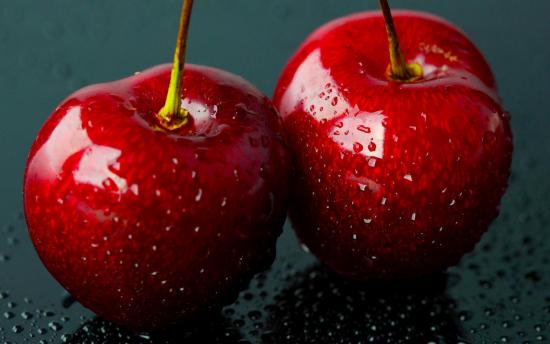
When planting in spring, it is advisable to apply manure and mineral fertilizers for deep digging in the fall. To plant, you need to prepare the planting hole in advance. If fertilizers have not been applied to the site since the fall, then they need to be added when planting directly into the hole; in addition to lime and nitrogen fertilizers, they will burn the roots. The size of the hole should correspond to the root of the cherry seedling, but it cannot be less than 50 cm in depth and the same in width.
The distance between the pits is at least 2.5 - 3 m, cherries of the same variety are planted in one row, the distance between the rows is at least 2.0 m. If necessary, rotted compost is added to the bottom of the pit. You can add phosphorus and potassium fertilizer in an amount of 15 -20 g and mix it with soil. Wood ash will not harm the seedling; 0.9 - 1.0 kg is enough.
Place the seedling at the bottom of the hole and cover the roots with soil so that the root collar is above the ground. Make a roll of soil around the trunk. After planting, the cherry seedling needs to be watered; two buckets of water left in the sun are enough. In the first year of life, the plant needs to be watered approximately once every 10 days. In the first three years, the seedling undergoes formative pruning, and from 5 to 6 years of age - sanitary and rejuvenating pruning.
It is important to control pests and diseases. The most dangerous disease is coccomycosis; for prevention, you need to remove plant debris under the cherries, and after harvesting and in early spring, treat the trunks with Bordeaux mixture. In addition, it is better to focus in advance on varieties that are resistant to this disease.
The following insects parasitize cherries:
- cherry leaf roller
- cherry moth
- cherry elephant
You can fight pests using infusions from tomato tops or potatoes. As for chemical agents, you can use Actelik according to the instructions. Although growing cherries requires some effort, this crop is worth having a place in the garden.
Recommendations for those who want to plant cherries:



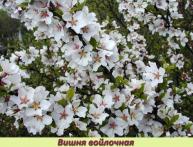
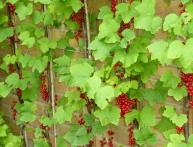
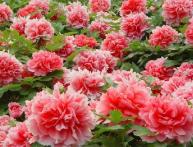
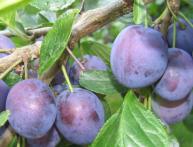
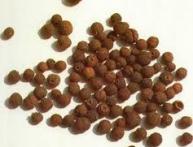
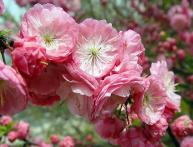
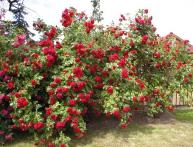

Comments
I didn’t even know there were so many types of cherries. We have a private house, so we can allow the cultivation of various plants, including this tree. Not only cherry fruits look beautiful, but also flowers during the ripening period. Unfortunately, one tree began to bloom this year, but for unknown reasons began to dry out.